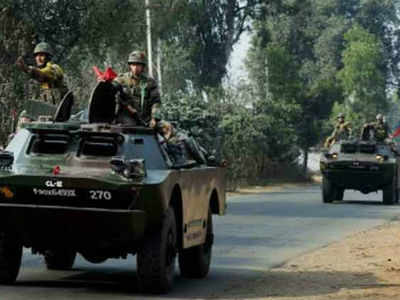$7.5 Billion FICV Program Runs Aground
Ministry of Defence may cancel EoI for $7.5-bn vehicle project
The ministry of defence (MoD) is planning to cancel and reissue an expression of interest (EoI) for the army’s $7.5-billion futuristic infantry combat vehicle (FICV) program.
Sources told FE that the MoD has also extended the deadline until later this month as the companies are waiting for the new Defence Procurement Policy (DPP) recommendations to be finalised, which has recommended a minimum 40% indigenous content as compared to the 30% indigenous content in DPP-2008.
The MoD, which invited 10 companies in 2015 to submit proposals to develop the FICV under the ‘Make’ procedure, specified that two development agencies would be chosen.
Now, even as that competitive selection continues, industry watchers claim that “the decision to extend the date and re-issue the EoI is being done to ensure that the Ordnance Factory Board gets the FICV program. However, since the OFB has no expertise, it will be allowed to work with a consortium of private companies.”
Industry sources claim that a consortium formed by L&T would include other players who have responded to the EoI. The nine private companies in the race — Larsen & Toubro; Tata Power (strategic engineering division); Tata Motors; Mahindra & Mahindra; Bharat Forge; Pipavav Defence; Rolta India; Punj Lloyd; and Titagarh Wagons.
The FICV program was approved in 2009, whose EoI was first issued in 2010 but was subsequently cancelled. Last year, the army re-issued the EoI after a gap of three years to 10 Indian companies and had sought responses by mid-January 2016.
Two development agencies (DAs) will be selected and will compete for the $7.5 billion project. The Indian companies have been encouraged to form consortium (maximum five) and also tie up with as many foreign companies to bring home latest technologies on a licence basis to strengthen indigenous know-how.
According to an E&Y report ,‘Eye on Defence 2016’, “Four assessment categories with varied weightage have been listed out to pick these two agencies at the end of EoI stage. The cost of development of the prototype will be shared amongst the MoD and contenders with a 4:1 ratio. DRDO, being a technical evaluation agency, will not be competing/participating as a potential partner for any of the 40 key technologies identified by the army in its proposal. The contribution of the Indian industry to acquire, develop and indigenise critical technologies will be one of the key criteria in the assessment of various proposals. This current issue captures all this a segment wise listing of the probable technology partners for this program.”
“Indigenisation is one of the important requirements of the program; therefore, parties must agree to collaborate to achieve the respective indigenisation targets for the development phase and serial production phase. A minimum 30% indigenous content on cost basis (excluding taxes, duties and other statutory obligations) is mandatory for the developed prototype of FICV. However, with 30% indigenous content, there is insufficient incentive to indigenise, which should be the primary objective in a ‘Make’ project,” the report states.
Also, the ownership of any intellectual property generated from any joint development will be mutually agreed upon and may be transferable to the MoD, if required for the program.
Under the ‘Make’ procedure, the defence ministry will choose the best two proposals. Those two companies, and the OFB, will design and develop separate FICV prototypes. The defence ministry would reimburse 80% of their expenses. As a matter of fact, no design of such major platform has been developed in the country and hence, no suitable data on cost of design and development is available for guidance.
The best prototype will then be selected, and the vendor that built it will get a manufacturing contract. About 2,600 FICVs will be needed to replace the army’s old Russian-origin BMP-2 infantry combat vehicles.
War Machine
* Firms are waiting for the new Defence Procurement Policy (DPP) recommendations, which include the recommendation for a minimum 40% indigenous content as compared with the 30% indigenous content in DPP-2008, to be finalised
* The defence ministry, which invited 10 companies in 2015 to submit proposals to develop the combat vehicle, specified that two development agencies would be chosen.
Source>>
@pmaitra @Sakal Gharelu Ustad @Nuvneet Kundu @Razor @Kshatriya87
Damn,

Private players here too.














